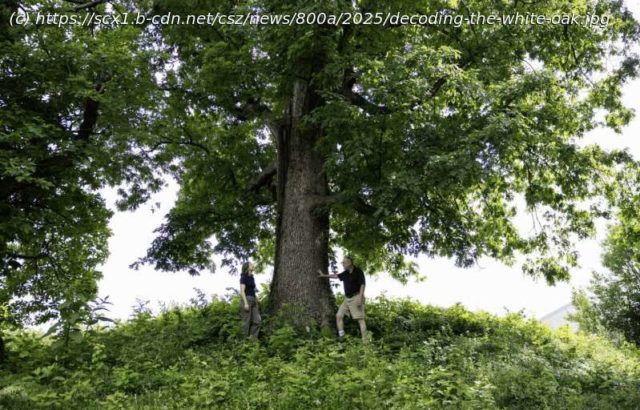White oak (Quercus alba) is important economically, ecologically, and culturally. However, the species currently faces a significant challenge: a low rate of seedling recruitment, the process by which seeds successfully germinate and grow into new trees.
White oak (Quercus alba) is important economically, ecologically, and culturally. However, the species currently faces a significant challenge: a low rate of seedling recruitment, the process by which seeds successfully germinate and grow into new trees.
„Vegetative competition from native and nonnative plants, along with environmental stressors such as drought and disease, make it increasingly difficult for young white oaks to establish themselves“, says Meg Staton, associate professor of bioinformatics and computational genomics in the Department of Entomology and Plant Pathology.
A recent breakthrough by Staton and her colleagues has opened promising new research avenues. For the first time, they have sequenced the full genome of white oak, providing insight into its genetic structure and evolution. The achievement will expand understanding of variation within the species, helping researchers to identify and utilize traits such as pest resistance and climate adaptability that can improve seedling survivability.
„While decoding the genome is a monumental development, the next step is identifying which genetic markers are critical for sustainability in challenging environments“, Staton explains. „By pinpointing these traits, we can support our forest ecosystems by developing new generations that are more resilient.“
Native to Tennessee and much of eastern North America, white oak is relied upon by a wide range of organisms, including mammals, birds, insects, and fungi.
Start
United States
USA — IT White oak genome reveals genetic markers for climate adaptability and pest resistance






